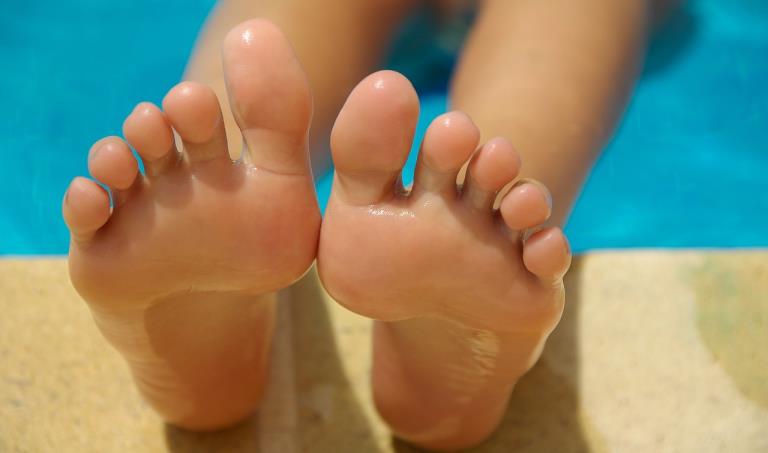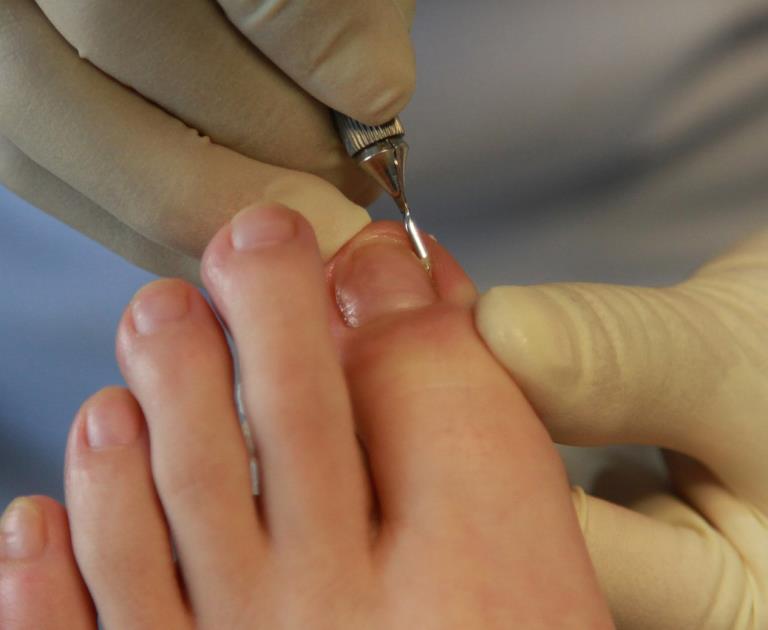Treatment for fungal conditions and ingrown nails
In our clinic, patient care and comfort are our top priorities. We use advanced technology and innovative techniques to ensure effective and safe treatments.Additionally, we will provide you with advice and recommendations so you can maintain optimal foot health between your visits.
Don't let foot problems affect your quality of life! Contact us today to schedule an appointment and receive the best podiatric care.

Onychomycosis
Onychomycosis, also known as athlete's foot or fungal infections in the feet, primarily affect the interdigital spaces and the soles of the feet. These infections can cause itching, redness, peeling, and discomfort.
While these conditions can be bothersome, it is important to address them properly to prevent their spread and alleviate symptoms. Treatment varies depending on the condition and may include topical medications like antifungal creams, as well as preventive measures such as keeping the feet clean and dry, wearing breathable shoes, and avoiding sharing personal items like towels or footwear.
A common fungal infection of the feet is known as athlete's foot (tinea pedis). Athlete's foot is caused by fungi that thrive in warm and humid environments, such as shoes and socks. Symptoms can include itching, redness, peeling, and cracks in the skin, especially between the toes. Treatment generally involves the use of topical antifungal medications like creams or sprays, along with measures to keep the feet clean and dry. In more severe cases, oral medications or more intensive treatments may be necessary under the supervision of a podiatrist.

Onychocryptosis
Onychocryptosis is a podiatric condition that occurs when a toenail grows abnormally, curving and penetrating the surrounding skin, which can cause pain, redness, and inflammation. It is commonly known as an ingrown toenail.
This problem typically affects the toes, especially the big toe, and is more common in individuals who cut their nails incorrectly or wear tight or poorly fitting shoes. There may also be a genetic predisposition to developing this condition.
These conditions can be uncomfortable and cause pain and discomfort when walking, redness and inflammation around the nail, or even a potential infection if left untreated. It is important to address them properly to prevent their spread and relieve symptoms.
Treatment varies depending on the severity of the case. In mild cases, proper nail trimming, the use of comfortable footwear, and antibiotics if infection is present may be recommended. In more severe cases, a minor surgical procedure may be necessary to remove part of the nail or correct its growth.
It is essential to treat onychocryptosis in a timely manner to avoid complications and improve the patient's well-being.
